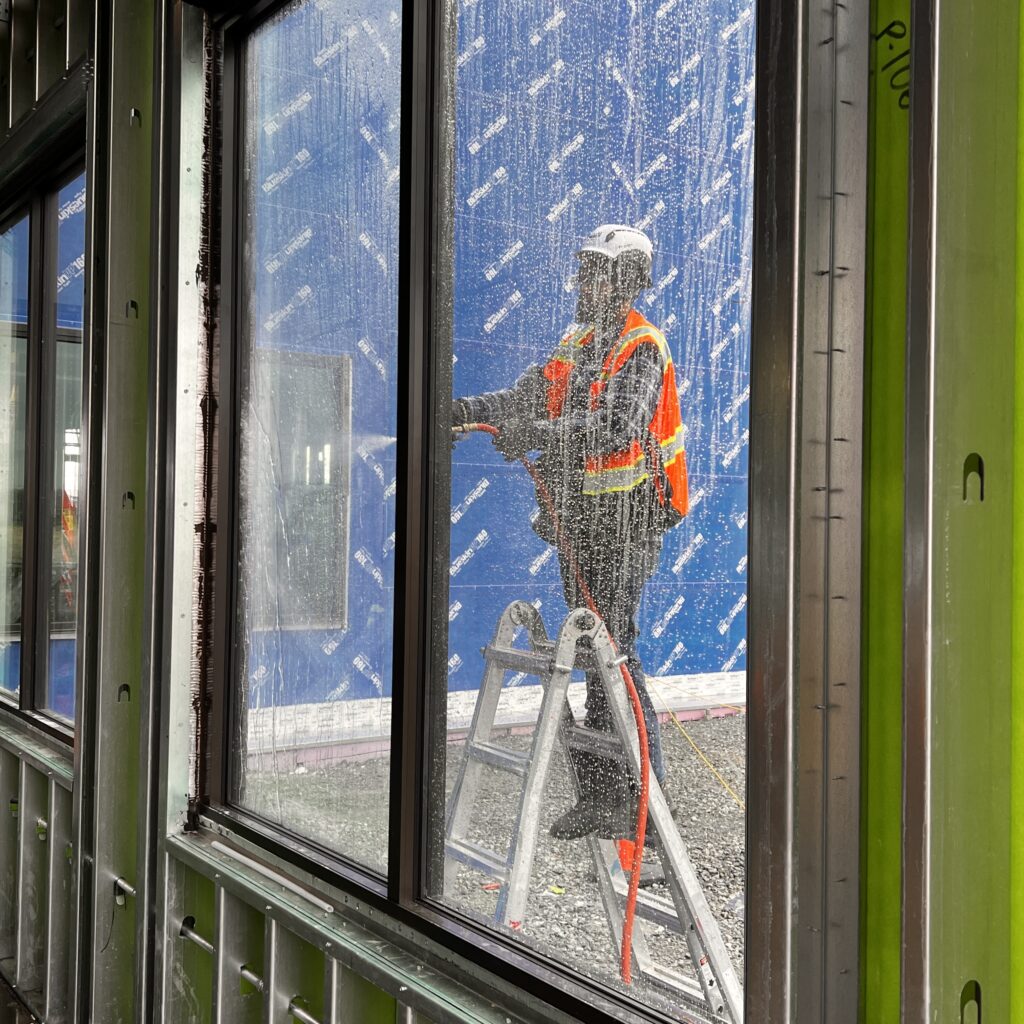
As the emphasis for sustainability and energy efficiency continues to expand, retrofitting building envelopes in existing buildings and structures has become increasingly more important.Retrofitting involves upgrading several different key components of a building’s exterior to improve the energy efficiency, indoor occupant comfort, and overall performance of the building. Today we will dive into the primary benefits of retrofitting building envelopes and the key components needed, in addition to the techniques involved.
Benefits of Retrofitting Building Envelopes
- Energy Efficiency: One of the primary reasons for retrofitting building envelopes is to enhance the overall energy efficiency of a building.Often older buildings suffer from poor insulation, air leaks, and inefficient windows and doors, leading to substantial energy loss.By upgrading these key components among others, energy consumption for the heating and cooling can drastically be reduced, resulting in lower utility bills and a smaller carbon impact. Studies have shown that conducting a building envelope retrofit can reduce energy consumption by up to 40% in some cases.
- Improved Indoor Comfort: A well-insulated and airtight building envelope supports in maintaining a consistent indoor temperature for occupants, reducing drafts and cold spots. This enhances the occupant comfort significantly by ensuring that the interior spaces remain warm in the winter and cool in the summer. Improved thermal performance also decreases the strain on building HVAC systems, contributing to better indoor air quality and overall comfort.
- Environmental Impact: Retrofitting building envelopes contributes to environmental sustainability by reducing the greenhouse gas emissions associated with energy consumption of the building. Upgraded insulation, air barriers, and windows for example reduce the need for fossil fuel use in heating and cooling. Additionally, using sustainable materials and practices in the retrofit projects can further reduce the environmental impact a building has.
- Increased Property Value: Energy-efficient buildings are often more attractive to buyers and tenants. Retrofitting a building’s envelope can increase property value and marketability by showcasing the building’s commitment to sustainability and lower operational costs. It has become more apparent in recent years that potential buyers and tenants are looking for properties that offer increased energy efficiency and comfort.
- Extended Building Life: Retrofitting can also extend the lifetime of a building by addressing and resolving critical issues including moisture intrusion, air leaks, and structural degradation. By improving the building envelope, the overall durability and resilience of the building’s structure are enhanced, leading to a reduction in maintenance costs and a longer service life.
Essential Components & Techniques for Retrofitting Building Envelopes
- Insulation Upgrades: Improving insulation is a significant component of building envelope retrofits. There are numerous insulation materials and methods suitable for retrofitting, including:
- Blown-In Insulation: This technique involves blowing insulation materials, such as cellulose or fiberglass, into wall cavities, attics, and other hard-to-reach areas. It is effective in filling in the gaps and holes within existing structures.Spray Foam Insulation: Spray foam provides a high R-value (a measure of thermal resistance) and exceptional air-sealing properties. It can be applied to several different components of the envelope including walls, roofs, and floors, establishing a continuous insulation barrier.
- Rigid Foam Insulation: Rigid foam boards can be installed on both the exterior or interior of building walls, providing a durable and efficient insulation solution. This method is particularly useful for adding insulation without disrupting the building’s interior.
- Air Sealing: Is essential for preventing drafts and lowering energy loss. Common air sealing techniques can include:
- Caulking and Weatherstripping: Applying caulk and weatherstripping around windows, doors, and other building openings can significantly reduce the number of air leaks.Sealing Penetrations: Guaranteeing that all penetrations for plumbing, electrical, and HVAC systems are properly sealed with foam or additional sealants.
- Air Barriers: Installing continuous air barriers on the building envelope prevents air infiltration and exfiltration. The barriers can be applied as membranes, spray-on coatings, or rigid panels depending on the building.
- Window & Door Upgrades: Windows and doors are often weak points within the building envelope, allowing significant heat transfer in the building. Upgrading both elements can greatly improve energy efficiency:
- High-Performance Windows: Replacing single-pane windows with double or triple-pane windows that have low-emissivity (low-E) coatings and insulated frames can support in reducing heat loss and gain.Energy-Efficient Doors: Installing doors with improved insulation and tighter seals can prevent air leaks while also improving thermal performance.
- Storm Windows & Doors: Adding storm windows and doors can enhance the performance of the existing units by providing an additional layer of insulation providing increased protection.
- Roof and Wall Improvements: The roof and walls are significant elements of the building envelope that require detailed attention in retrofit projects, including:
- Roof Insulation: Adding or upgrading the insulation in the roof can prevent heat loss in the winter in addition to heat gain in summer. Reflective or cool roof coatings can also reduce heat absorption.Wall Cladding: Installing exterior cladding systems, such as insulated panels or rain screens, support in improving thermal performance and protect the building’s structure from moisture and weathering.
- Green Roofs & Walls: Incorporating green roofs and walls can provide further insulation, in addition to reducing the urban heat island effects, and improving air quality.
- Moisture Management: Effective moisture management is fundamental for the longevity and performance of the building envelope.
- Waterproofing: Applying waterproof membranes and sealants to the exterior surfaces of the envelope prevents infiltration.Drainage Systems: Ensuring proper drainage around the building supports in directing water away from the foundation and walls.
- Ventilation: Integrating appropriate ventilation systems is key in maintaining and managing indoor humidity levels and preventing condensation and even mold growth.
Retrofitting building envelopes within existing buildings is a considerable strategy for enhancing energy efficiency, improving indoor comfort, reducing environmental impact, increasing property value, and extending the life of the building. By focusing on insulation upgrades, air sealing, window and door improvements, roof and wall enhancements, and effective moisture management, building owners and primary stakeholders can achieve considerable performance advances. Effective retrofit projects demonstrate the tangible values of these upgrades, making them a sensible investment in the sustainability and longevity of existing buildings.
